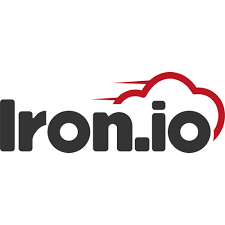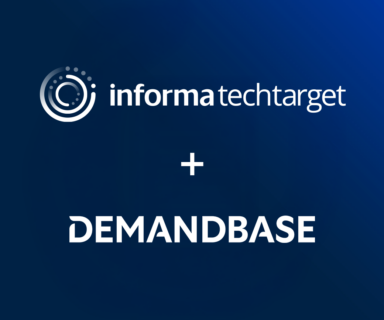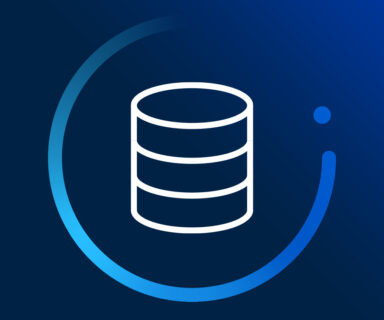 is Vice President of Global Marketing at Iron.io. She oversees all facets of marketing and the beginning of the sales pipeline including demand gen, product marketing, brand, PR/AR and the Sales Development Group. Kris has held numerous positions at high-growth companies building global marketing messaging and sales alignment with in-depth expertise in technology marketing and working with global brands.
is Vice President of Global Marketing at Iron.io. She oversees all facets of marketing and the beginning of the sales pipeline including demand gen, product marketing, brand, PR/AR and the Sales Development Group. Kris has held numerous positions at high-growth companies building global marketing messaging and sales alignment with in-depth expertise in technology marketing and working with global brands.
Can you give a brief overview of what Iron.io does?
Iron.io provides job processing for the modern enterprise and provides solutions that are both job and batch processing related. Its microservices architecture enables companies to transform large data sets into job processing that helps them drive revenue. Its asynchronous workloads operate in public and private clouds, on-premises, or hybrid environments, meeting enterprise requirements for flexibility, control and security-friendly solutions.
Is your marketing global in scope, and if so across which geographies?
Iron.io has a presence in North America, South America, and Eurasia. Our marketing supports sales across these geographies.
What led you to invest and renew Priority Engine for your marketing?
When we were first introduced to Priority Engine we saw it as a tool that could support Marketing Enablement and help us in our nurturing campaigns. In the past, we would purchase lists, nurture them until they became MQLs and then reach out to them. With Priority Engine, we realized we could have immediate and unlimited access and views to people in buying patterns that we could target with a very specific process instead of reaching out to randomly. As we used the tool more and more, we immediately saw the value it would bring to our marketing, our nurturing and in helping our sales teams engage more effectively which led us to renew it annually.
What has been unique about Priority Engine and how is it changing and/or improving your marketing and sales?
We’re getting people more likely to be in buying stages which enables us to tailor our messages and pitches more specifically to their needs. It’s also helped us shorten the process to get into an opportunity because sales is spending less time with people in early education mode. Priority Engine enables us to do nurture campaigns focused on companies with an upcoming need our solutions can address.
What type of KPI’s are you using to measure success with Priority Engine?
Priority Engine supports three of the KPI’s my team is responsible for:
- A specific number of MQLs (Marketing Qualified Leads) from a specific target demographic.
- A specific number of SALs (Sales Accepted Leads) where there is a need we can fulfill and it is the right contact.
- A specific number of opportunities at a minimum annual price sourced from marketing.
Can you share any metrics or ROI you’re seeing since using Priority Engine?
Since using Priority Engine, we are seeing great results in our nurturing campaigns and most notably in our email performance across the board. We are getting open rates at 21.1%, click-to-open rates at 16.5%, and click-through rates at 3.5%.
How has the direct integration of Priority Engine into Salesforce.com helped with your sales workflow?
Having it all integrated is fantastic. We have a lot of MQLs and because we can integrate, we upload them directly into Salesforce into a specific campaign, score them and do targeted nurture campaigns based on which campaigns we place them in and can track them much better. That is really great from an ROI perspective. We also have the capability to customize the message based on whatever stage they are at. Not only does the ability to integrate save steps, we can easily understand how we’re tracking against our marketing and sales KPIs.
Priority Engine is also providing sales unique views of data they didn’t have before in terms of background information and activities on the people they engage with enabling them to customize their pitches much more appropriately.
How have sales conversations changed or improved since using Priority Engine?
Sales is having conversations with people at a later stage who are picking a solution versus ones who are at an initial stage requiring a lot of upfront education for future needs. In the past the extra step sales spent on educating early stage leads was extending sales cycles out by months. Now, sales is spending more time engaging with people focused on choosing a solution and can tailor their conversations around that.
Has sales provided feedback on the value Priority Engine is providing to them?
Our sales team has noted a marked improvement in the quality of conversations they are having since we’ve started using Priority Engine. They’ve said the conversations keep getting better and better. At Iron.io, marketing and sales are already well-aligned. Priority Engine is helping to support this effort.
Do you anticipate using Priority Engine for other marketing inititaives down the road?
We have an inside SDR (Sales Development Rep) team and we’re currently recruiting for an outside SDR team as well. With the use of Priority Engine, the outbound team will help get better targets than if we purchased cold lists or they tried to reach out cold through LinkedIn. I also see Priority Engine as a vehicle to help deliver messages based on what people are downloading, even when it isn’t our content.
How have you leveraged your TechTarget Account Team using this service?
Our TechTarget Account Manager listened and understood our needs and presented options that matched our needs based on what we were doing. It was highly consultative which was incredibly valuable. From the post sales and implementation side, our Priority Engine Specialist has been great in not just helping us get it implemented but also in training our demand generation person on ways to optimize using the tool. The whole process using Priority Engine has been great.




